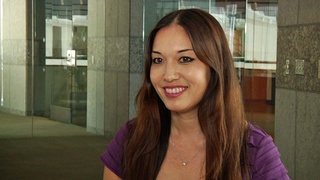Interviews
Hapa as his primary identity
I was born in ’65, I was born two years before the laws went off the books about anti-miscegenation. I was 35 years old before the Census allowed me, for the first time, to check more than one box—that’s ridiculous! Every job application, every school questionnaire was always “pick one” or they give you that “Other” box and ask you to explain. Me and my parents would always write “No! We’re not going to explain!” And to me, it’s like having to choose to be Chinese or “white” as a kid was always this thing like well, it’s like choosing Mom or Dad, and “I guess I like Dad today, and I’ll be white.”
So what happened was, I was told about the word Hapa when I was about four or five. My friends, my cousins from Alhambra, it’s like “Well, you’re Hapa” because they were going to this entirely Chinese American school. “You’re Hapa.” “Okay.” And I didn’t ever really think about it, it was never a big deal to me until I started living in Hawai`i and it’s such a different—it’s such a non-issue in Hawai`i and the awareness is so much greater that I’ll be playing pick-up basketball and people will just say “Hey hapa haole!” you know, they just call you by “Hey, popolo!” It’s just—aware. And so, for me, Hapa was always something that, it just feels like it’s something that makes sense for me. I didn’t like “Amerasian”. I am Asian American, certainly, but I think I’m Hapa first.
Date: May 3, 2006
Location: California, US
Interviewer: Jim Bower
Contributed by: Watase Media Arts Center, Japanese American National Museum.
Explore More Videos

On Challenging Institutions
(1938-2020) Japanese American attorney and civil rights activist

Pop and Balls
(1938-2020) Japanese American attorney and civil rights activist

Re-examining Identity
(1941-2018) Japanese Canadian photojournalist and activist

Fitting in to both sides of her family
Jewish Japanese American journalist


Culture is an important part of one's identity
Jewish Japanese American journalist



Conflicted about immigrating to America (Japanese)
(b. 1925) War bride

Defining "Nikkei"
(1941-2018) Japanese Canadian photojournalist and activist

Unique Identity from Having Multiple Backgrounds
(b. 1938) Philipines-born hikiagesha who later migrated to the United States.

Growing up Japanese in Hawaii
(b. 1952) Former banking executive, born in Hawaii



Parents identification as Peruvian Okinawan
Okinawan American whose parents are from Peru.
